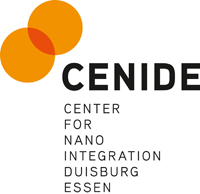Research Project 3
Synthesis and Inline-Processing of Nanoparticles
The targeted, knowledge-based structuring of nanoparticles and nanoparticle ensembles in the form of composite and core-shell systems is the focus of this subproject. The possibilities of gas-phase synthesis shall be used to combine structural properties with material properties to create novel materials. This subproject investigates possibilities for the synthesis of inorganic materials, which – by structuring and combination of different substances – enable new properties. The focus is on processes that are capable of producing spherical, non-aggregated nanoparticles through high temperatures and temperature gradients and further process them directly in the gas phase in a downstream process step. This is intended to directly coat primary particles as well as aggregates and shall be used to "conserve" particle properties as well as to enable further structuring. Essential tools are the variation of the temperature-time profile and the residence time of the materials in the reaction zone. This work is supported by fluid dynamics calculations from TP9 (Kempf) and by investigations of the homogeneous and heterogeneous decomposition kinetics of precursors (TP1, Schulz|Fikri|Somnitz).
The basis of the project is the use of knowledge already gained in previous work for the synthesis of silicon, iron and iron oxide nanomaterials. The aim is to produce larger, three-dimensional structures from these materials with adjustable morphology and composition by direct inline processing. The resulting knowledge and design rules for structuring will be used to support the process technology and the operation of the pilot plant reactors in TP6 (Schnurre|Wiggers). In addition to processing and structuring, the production of material combinations such as composites and core-shell structures will also be investigated. The aim is that the surface assumes both, a function with respect to the specific properties of the embedded particles and with respect to the further inline structuring. For example, surface layers with a lower melting point than the particle cores can support further structuring without affecting the core properties. Besides the intended coating with polymers, glass formers are also suitable, which sinter not by diffusion processes but by viscous flow. These investigations are done in close cooperation with the TP5 (Kruis). An important prerequisite for the investigation of the detailed processes is to operate the synthesis equipment in such a way that particle formation, growth and coating can be recorded in time and in space, which is done in close cooperation with TP7 (Dreier|Schulz).
Project management
Dr. Hartmut Wiggers
University of Duisburg-Essen
Faculty of Engineering
Phone: +49 203 379-8087
E-Mail: hartmut.wiggers@uni-due.de
https://www.uni-due.de/ivg/rf/



